Posts Tagged ‘RMIT’
Today we had our first consult with Paul after the presentation. To be honest, it was a bit of a reality check as the realisation hit that we really need to knuckle down and get moving with our final outcome. Prior to this meeting, most of our attention was focused on the presentation alone, and now we’re in a position where we need to actually put our words into action. It’s easy enough to say what we intend to do, but doing it is a whole new matter!
Paul began by encouraging us to come up with a name, or at least some form of working title. I think name’s are really difficult to commit to as it is such an important part of your product. People’s first impression of a media product is usually based on the name, and that can influence whether or not they choose to engage with it. Of course concept is important, but viewers may not seek out additional information unless they are intrigued by the title… I think this is kind of why we’ve avoided naming it all together. In our consult I casually said that I’d pick my group up from The Pines, a shopping centre nearby which is on the bus route. And with that, The Pines became our working title. Emphasis on the word ‘working,’ as unfortunately there are no pine trees in the Warrandyte State Park. “The Gums” would be more accurate, but that suggests some sort of dentistry nightmare – not exactly the horror vibe we’re going for.
We also discussed permissions, call sheets and safety reports. As the primary location manager (if that’s even a thing), I took it upon myself to handle permissions. Thinking it’d be fairly straight forward, I sent the following email to Parks Victoria:
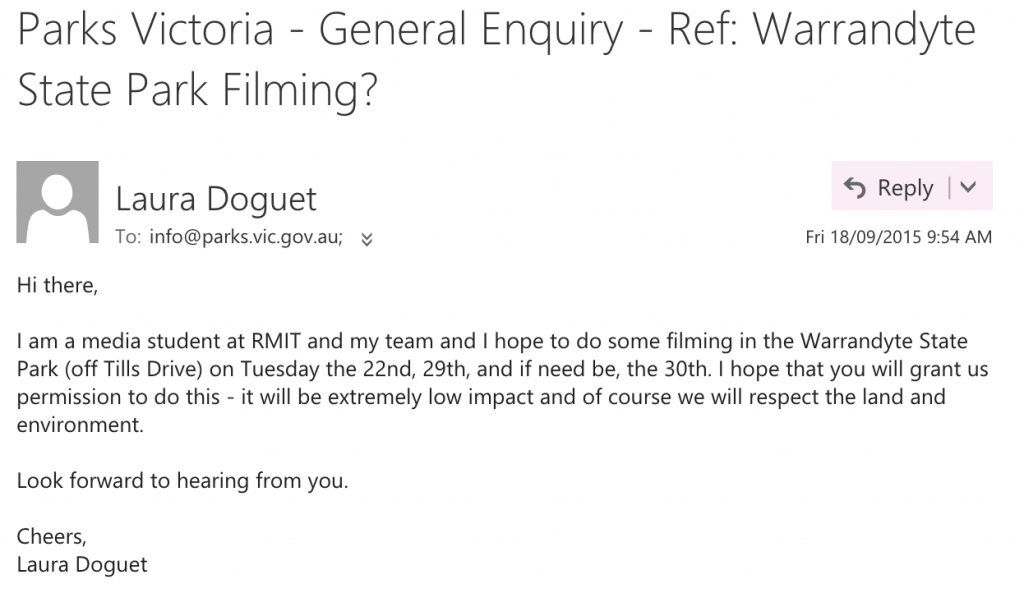 Only to get the following reply:
Only to get the following reply:
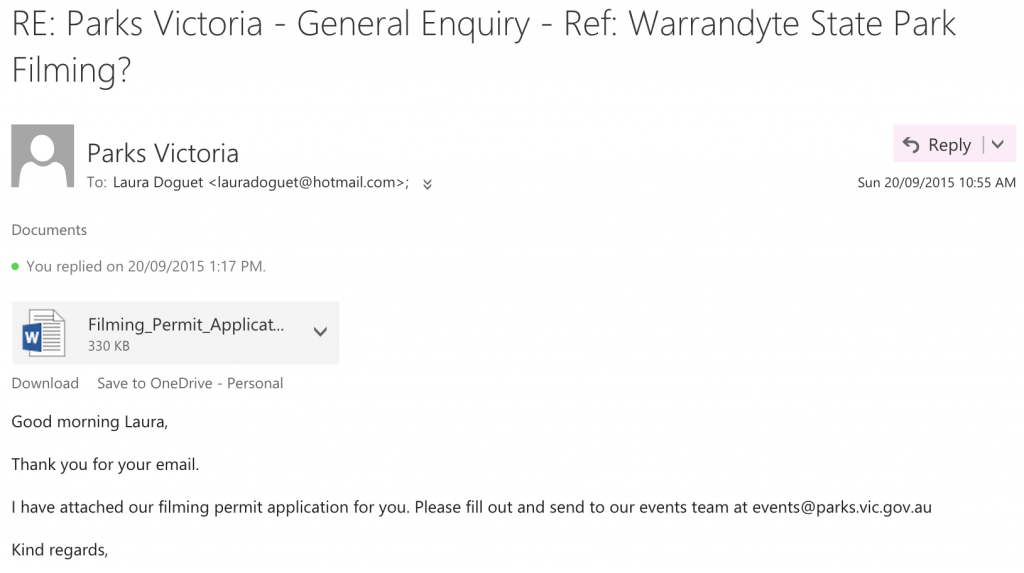 The document attached was an filming permit application form which was 17 PAGES LONG. On first thought, I figured there was no way this is going to get approved in time even if I do fill it out. However, upon reading the document a bit closer I’m 90% sure that the need for permit doesn’t apply to us. To my understanding, it is for commercial projects, whereas our filming is primarily for personal use. THANK GOD. This goes to show why full-scale, commercial productions require so much more time. If we were shooting a feature film and required permission for say six locations, it would likely take months to coordinate.
The document attached was an filming permit application form which was 17 PAGES LONG. On first thought, I figured there was no way this is going to get approved in time even if I do fill it out. However, upon reading the document a bit closer I’m 90% sure that the need for permit doesn’t apply to us. To my understanding, it is for commercial projects, whereas our filming is primarily for personal use. THANK GOD. This goes to show why full-scale, commercial productions require so much more time. If we were shooting a feature film and required permission for say six locations, it would likely take months to coordinate.
In Thursday’s class, we intend to experiment with shooting walking and running shots as they can be quite difficult to perfect. Further actions from this point forward include the allocation of roles, selection of shooting days, and undertaking the necessary pre-production steps to maximise our productivity.
The following are the slides we used for our presentation on Thursday. I acknowledge that some of them won’t make sense without the context of what we were saying, so I will explain what each member was exploring below.
Sarah introduced our project by outlining the genre we intend to investigate, what we will produce and what roles and research we will each be undertaking.
Bonnie followed by identifying some films and trailers which we have used as inspiration. She compiled them into a short video with voice over analysis, listing the techniques and elements we appreciate and hope to mimic in our production.
I was up next and talked about Warrandyte as a location, how we established our idea with the location in mind and divulged our findings from location scouting the other week (what I said can be found in one of my previous blogs).
In classic Jackson style, he humorously shared how he has found the script writing process so far, as well as what our story concept is actually about.
Finally, Alex talked about the script editing process. She identified her intentions when going through the script, such as identifying things that could be more concise or parts that could be improved, and identifying parts that are unnecessary.
Overall, I think our presentation went quite well as we each had a clear idea of our roles and what to discuss. We were given confidence in our consultation with Stayci who was supportive of what we intended to convey. In our feedback, Paul acknowledged the fact that shooting for a trailer specifically could be interesting as it challenges the conventional practice (in which the film is made first, the trailer second). Although this had crossed our minds originally, we thought we might be limited creatively and restricted by a format if we decided to shoot for a trailer alone. Hence, we decided we would be better off to direct most of our attention towards producing a sequence of quality scenes, and if suitable, construct them into a ‘trailer-type format.’ This prototype will exhibit the highlights of the scenes and act as a teaser for the complete ‘feature film.’
Although I am interested to explore the thriller genre further, I did like the sound of the other groups’ intentions to experiment with different genres and characters in their productions. Interestingly, many groups assumed this same sort of approach. I really liked the premise of these ideas but did question their achievability given time constraints. I suppose the specificity of ours will allow us to really hone in on what makes a good thriller and hopefully produce something of a high standard.
I hope our presentation fuelled some excited for what is to come from Squadron. I’m looking forward to the weeks of hard work ahead and to put our words into action (literally).
Thriller Final from Bonnie Dunleavy on Vimeo.
Embedded above is the Bonnie’s moving mood board/trailer compilation that we will exhibit in our presentation. I must give full credit to her for the voiceover analysis, but I thought in this blog I’d expand on her thoughts with my own observations.
It’s interesting to note the similarities in the relationship between the location, character and camera in these trailers/films. In a sense, the location becomes a character as it plays a role in the protagonist’s growth and development. For example, the environment of the Hunger Games presents challenges that Catniss must overcome in order to become stronger as a character.
In each trailer included, there is this frequent sense or urgency and panic when surrounded by nature. An interesting motif across all trailers is the action of running frantically through the forest, suggestive of its dangers and unpredictability. While of course there is presumably a more immediate danger that they are running from, i.e. the villain, the bushland certainly does not make this chase any easier for the protagonist. We all know that scene where the protagonist trips over a log and scrambles around on the ground as they attempt to get up. Cliché yes, but a clear example of how a bush/forest location can be used to exacerbate the danger that already exists.
To translate the sense or urgency and danger onto the screen, certain shots and camera movements are utilised. In the more intense forest scenes, the camera follows them as they run with an extremely shakey tracking shot. It can feel as though the viewer is running behind them and thus can relate to their fear on a more intimate level. If wider more stagnant shots are used, the mood is usually calmer.
I think it’ll be interesting to figure out how to best encapsulate Emily’s (our protagonist) fear through camera techniques and her relationship with the location. If we decide to include the stereotypical running scenes through the bush, we would definitely need to experiment with shots to see what we can actually achieve without any elaborate equipment. It will be a fun challenge to play with camera angles, shots and movements to assess what will best create our desired mood.
The following post is my part of our presentation:
Our final project concept was largely inspired by our chosen location. In our first brainstorm as a group, we went around the circle and each shared where we lived as it made sense to us to film with an area that a group member was familiar with. From weighing up the visual appeal of locations to the logistics of shooting within them, we came to the conclusion of filming in my hometown, Warrandyte.
Warrandyte is a small north-eastern suburb about 50 minutes from the CBD. The town and environment remains preserved with beautiful state parks, vast bushland and serene spots along the Yarra River. If need be, we also have access to a house for interior shots, as well as cafes and supermarkets that I’m affiliated with.
While on one hand Warrandyte can represent peacefulness and serenity, on the other it can be perceived as the complete opposite. With the bush in mind, we were led to consider thriller/horror genres as there is this frequent association with bushland and the harsh Australian outback with these sorts of themes. Thus, instead of writing with an actor in mind like the activity we completed in class, our intent instead became to write and create with a location in mind. We found that this process made the task of coming up with a story and concept much easier as we already had something to work with and draw from.
Once we had decided on a rough story concept, Bonnie and I actually went location scouting. We were on the hunt for two key locations – one for our ‘calm before the storm,’ semi-romantic scene, and the other for our creepy, thriller-esque bush scenes.
Location one – the main walking track along the Yarra River
The main walking track along the Yarra was an obvious choice to check out. In one of our scenes, which Jackson and Alex will explain further, our female protagonist Emily walks along the river with her fiancé Damien. As I wrote the concept for this scene thinking of this specific location, it fitted the scene seamlessly. The only issue we may encounter with this spot is that it can get quite busy on weekends and nice days.



Location two – Pound Bend
Pound Bend is another scenic spot in Warrandyte which features the iconic gushing tunnel. It’s a really cool location but is almost too much for our calm scenes as it may detract visually and aurally from the conversation between our characters. If we wanted to be a bit experimental however, we could get some shots of the water gushing through the tunnel to intercut with some of the later, more intense, bush scenes.
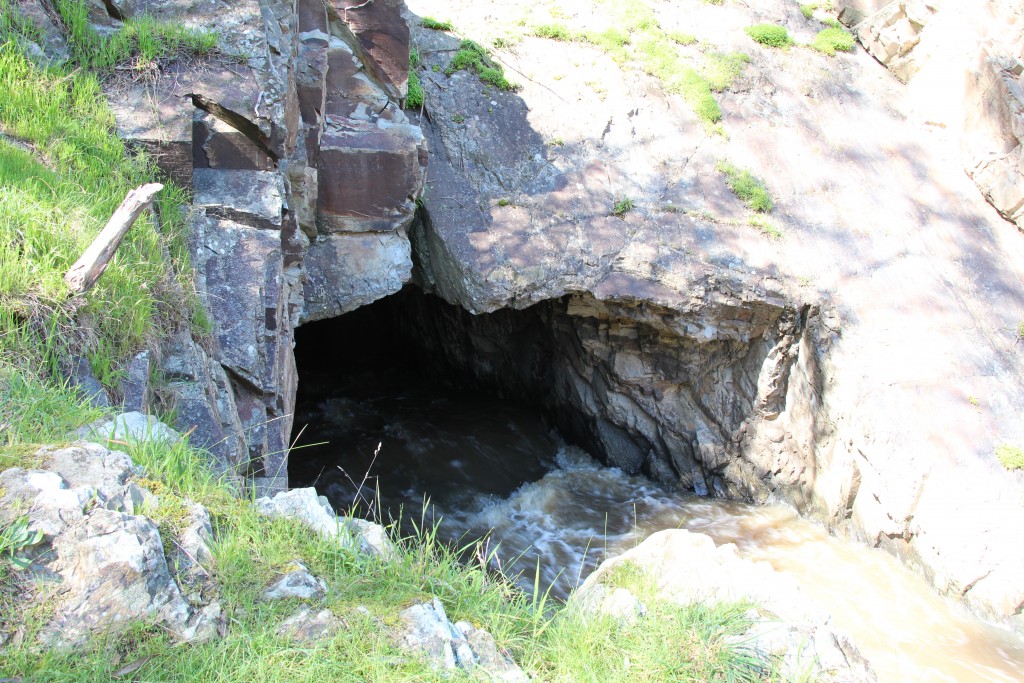

Location three – State Park via Whipstick Gully
This state park was home to some interesting relics of the gold mine period, such as this mine and this big ol’ wall. However, as this state park is commonly used by bushwalkers and horse riders alike, it has very defined and obvious tracks. This is an issue as we want the bush location to appear isolated and remote – not something people use on the daily. It was also a bit too green and welcoming for our liking.
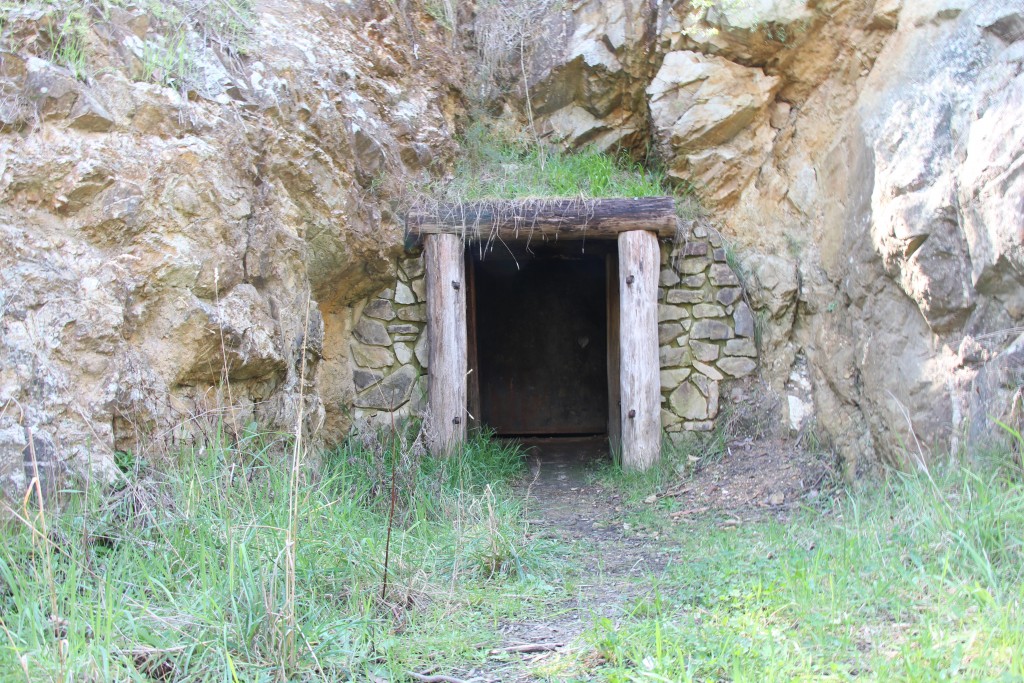
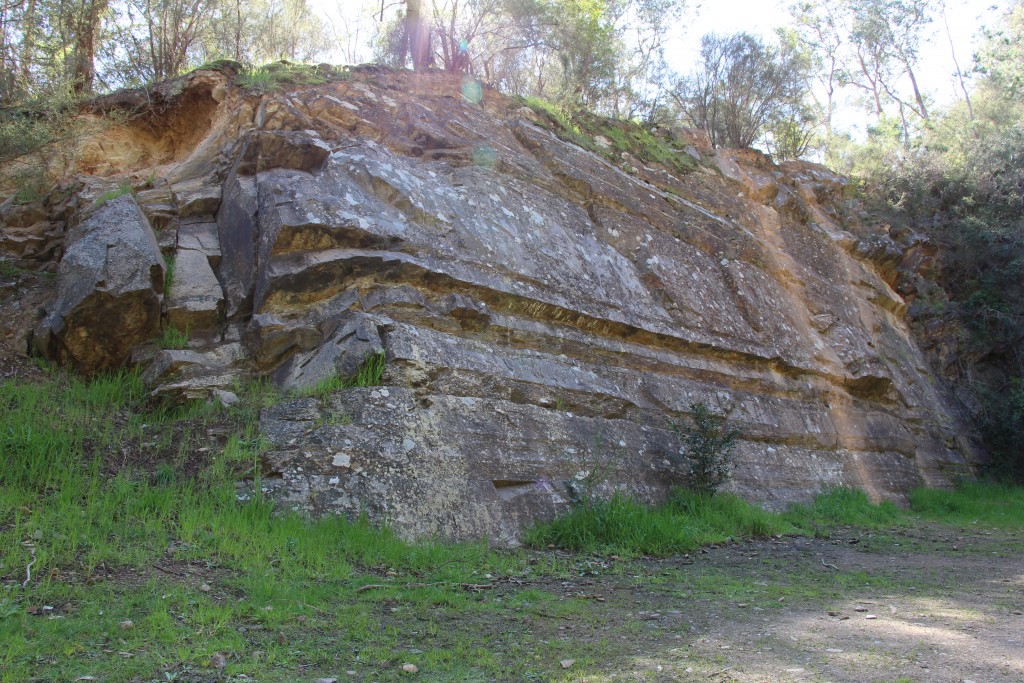
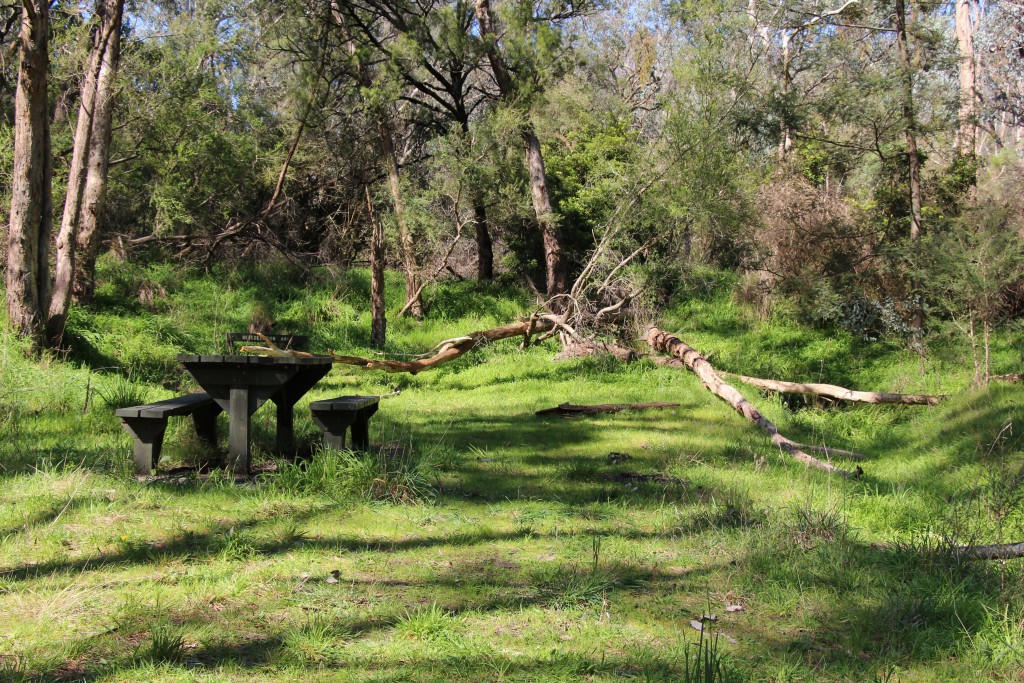

Location four – State Park via Tills Drive
The final state park we went to was a clear winner for our bush scenes. We discovered these bizarre sink holes containing rusting rubbish surrounded by the dry bushland of the park. The creepy and eerie vibe was just what we were looking for, and there was also potential to veer away from the track to set the scene within a more desolate-appearing area.
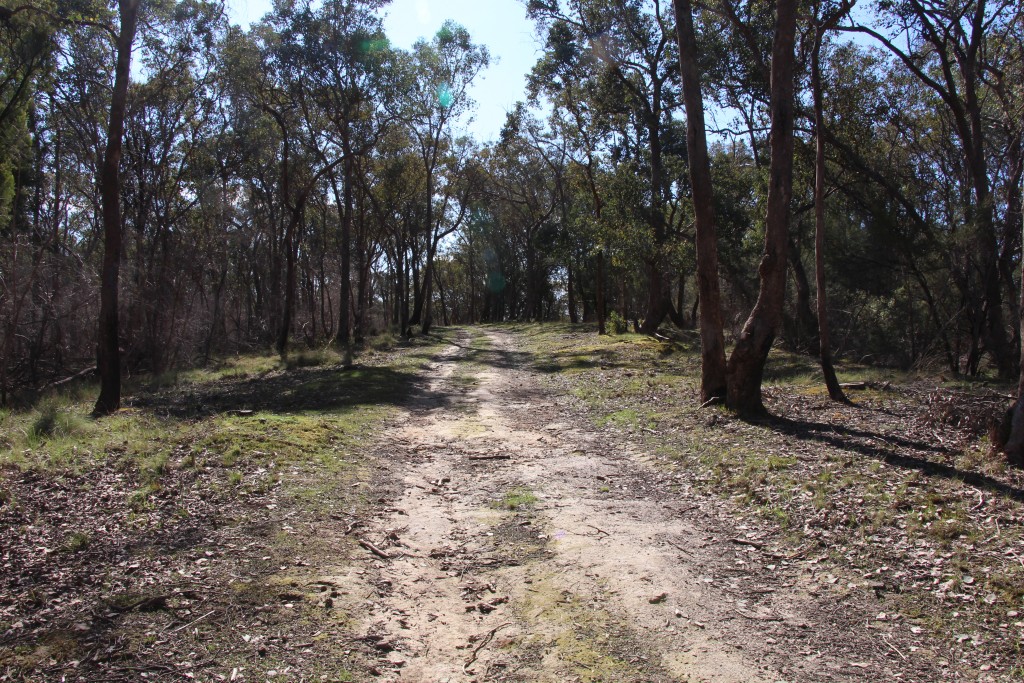
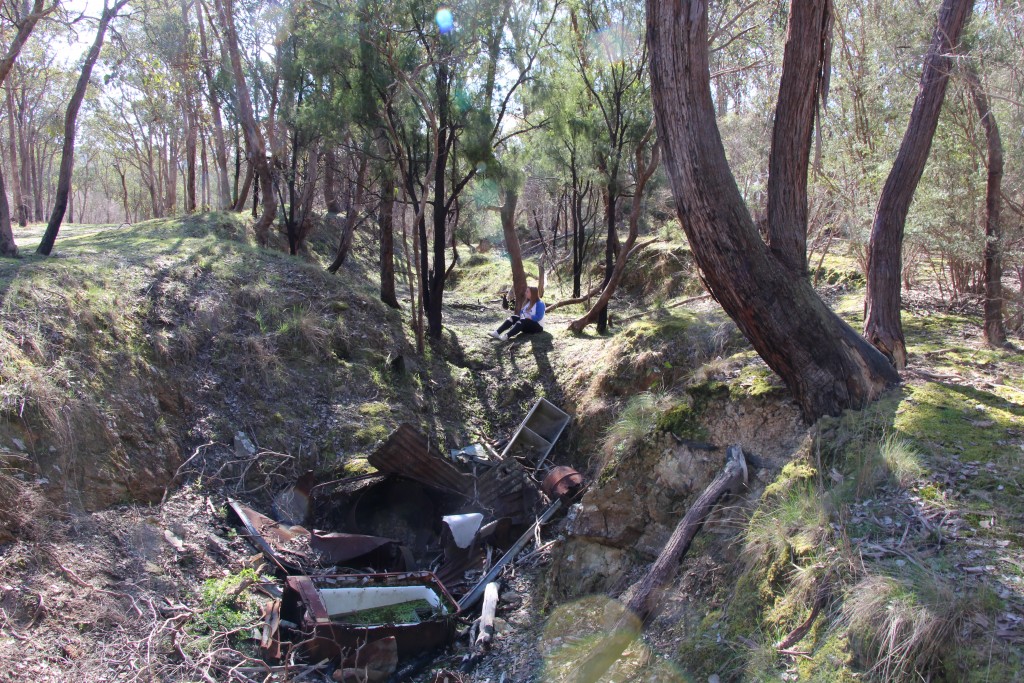

After all writing and discussing our proposed ideas for the final project, we decided as a group to go forth with my concept, as it seemed to be the most workable and appropriate for the nature of the task. We then loosely delegated roles based on our interests as follows:
- Sarah – producer
- Bonnie and Laura – location scouts, cameraperson(s) and editing team
- Jackson and Alex – scriptwriters
For the meantime however, we must direct our focus on the fast-approaching presentation in week seven. To my understanding, the presentation is less of a pitch but more of an explanation of our intentions and progress so far. Once more, we allocated each group member with a subject to speak about:
- Sarah – proposal/question, concept, general research
- Bonnie – Trailers to draw inspiration from
- Laura – Location
- Jackson and Alex – Draft script
As above, my main topic of focus is on location, but I will save that for another post. In this blog I wish to focus on the broader complex ideas we will explore through our productions, and thus address in our presentation.
At the crux of our project is the desire to produce something technically sound, visually aesthetic, and most importantly, something with a strong and compelling storyline. We intend to take this a step further however by researching the thriller genre as a whole, investigating what makes a thriller ‘thrill,’ if you will. My concern with the thriller genre is if it is not done well, it can come across as a little cheesy and even comedic. We thus intend to then put our research findings into practice in our writing and filmmaking.
So a good starting point is to investigate what exactly defines a thriller.
I found the following definition online which I thought summed it up quite well:
 This definition is a good reference point for our production. It explains what mood we are trying to create, as well as how we want the audience to feel. But through what measures can we achieve this?
This definition is a good reference point for our production. It explains what mood we are trying to create, as well as how we want the audience to feel. But through what measures can we achieve this?
A good story and motivated protagonist are obvious features to a thriller (and any other film, for that matter), but the genre relies heavily on a number of other elements to contribute to its suspenseful nature. According to Bordwell and Thompson, “the thrillers emphasis on suspense and surprise encourages the filmmaker to mislead the audience, and this invites experiments with the narrative form.” This textual quality makes a lot of sense, as if the viewer is fully informed at all times, they will never experience the uncertainty and anticipation of the thriller genre.
To achieve this, certain stylistic choices are exploited in this genre. For example, framing, specifically the use of off-screen space, is utilised particularly well in thriller and horror films. Viewers are led to acknowledge that what they see in frame does not contain the entire world of the story, and that something may be lingering outside of the frame. Filmmakers can create suspense by teasing the viewer with the possibility of something being there (or not).
Music is another crucial element that works to build suspense. When you watch a thriller film on mute, it is not nearly as tense as it is with volume. Music works to subconsciously make us anxious, build our anticipation, excitement, or fear. It is therefore crucial we use music to our advantage to achieve our desired mood and tone.
I believe it is important that we direct significant attention to these stylistic choices in order to better our chance of a consistent, compelling thriller. Hopefully we are able to execute them with success as to avoid our scenes becoming a comedy!
In class this week, we completed an interesting exercise involving character building with subjects in mind. The task was to scroll through the StarNow page (specifically those who have agreed to work with us), select an actor from their headshot and create a character and narrative inspired by what we see.
To begin, I chose this young fella:

I started off with a few dot points of my immediate idea to help me structure the prose to follow:

 I didn’t have time to write a sound conclusion, but I was pretty happy with the story concept I was able to come up in the short amount of time available. As I usually find it difficult to develop an idea from scratch, using the headshot as a visual prompt really helped me to get the ball rolling. This task was not dissimilar to previous exercises in which we would use a written prompt to help us come up with an idea for a story/script. Comparing the two processes, I personally preferred using an image to draw inspiration from as I am more of a visual-minded person. Thus, I found I was able to devise the prose more naturally and easily as I could visualise not only my protagonist, but also the world in which he surrounds himself.
I didn’t have time to write a sound conclusion, but I was pretty happy with the story concept I was able to come up in the short amount of time available. As I usually find it difficult to develop an idea from scratch, using the headshot as a visual prompt really helped me to get the ball rolling. This task was not dissimilar to previous exercises in which we would use a written prompt to help us come up with an idea for a story/script. Comparing the two processes, I personally preferred using an image to draw inspiration from as I am more of a visual-minded person. Thus, I found I was able to devise the prose more naturally and easily as I could visualise not only my protagonist, but also the world in which he surrounds himself.
The exercise made me think more deeply about what we were doing and how it relates to industry practice. A lot of writers and filmmakers often use the phrase ‘writing with actors in mind.’ I was led to wonder however what are the main factors to consider about the person in mind when doing this.
Do filmmakers write with an actor in mind based on their…
- Physical appearance?
- Previous roles in films/celebrity status?
- On-screen persona or identity?
- Relationship with the filmmaker or cooperative nature on set?
Or maybe it’s based on reachability, i.e. writing for someone who they will realistically be able to cast. Of course, it’s likely that it is a combination of these factors and, dependent on the filmmakers’ status and motivation, priorities are bound to differ from one case to another. It’s interesting though to consider these factors and how they relate to our own scriptwriting practice, e.g. what’s most important to us when crafting and casting characters.
To some extent we ‘wrote with an actor in mind’ in this class exercise, but all we had to work with was a mere headshot and a few lines (if that) in their bio. I did feel a bit guilty judging Rupa purely on his appearance alone, as obviously I wasn’t totally informed about what he would be like as an actor. For all I knew, he might have a totally different demeanour and not be fitting for the role I wrote him into at all. If we were actually planning to write a script with the intention to film based on the actors we selected, we would probably need to meet them in order to gauge if they really are suitable.
All in all, this exercise was certainly a valuable one and has inspired me to gain inspiration from visual prompts. Story inspiration is everywhere – you just need to look at the people and world around you with an open mind.
 Only to get the following reply:
Only to get the following reply: The document attached was an filming permit application form which was 17 PAGES LONG. On first thought, I figured there was no way this is going to get approved in time even if I do fill it out. However, upon reading the document a bit closer I’m 90% sure that the need for permit doesn’t apply to us. To my understanding, it is for commercial projects, whereas our filming is primarily for personal use. THANK GOD. This goes to show why full-scale, commercial productions require so much more time. If we were shooting a feature film and required permission for say six locations, it would likely take months to coordinate.
The document attached was an filming permit application form which was 17 PAGES LONG. On first thought, I figured there was no way this is going to get approved in time even if I do fill it out. However, upon reading the document a bit closer I’m 90% sure that the need for permit doesn’t apply to us. To my understanding, it is for commercial projects, whereas our filming is primarily for personal use. THANK GOD. This goes to show why full-scale, commercial productions require so much more time. If we were shooting a feature film and required permission for say six locations, it would likely take months to coordinate.















